#object oriented design
Explore tagged Tumblr posts
Text
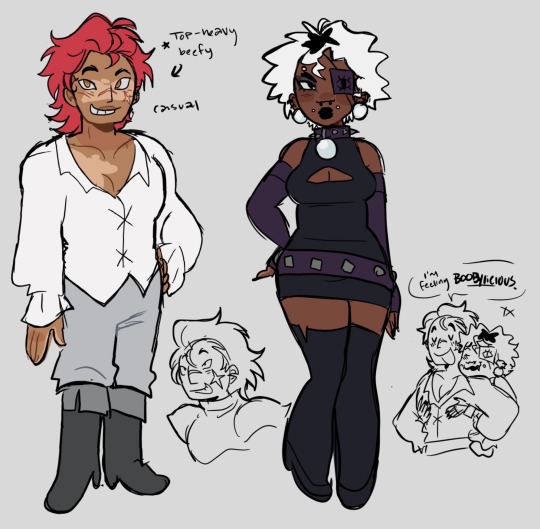



some stuff…. i wanted to make a clearer knight helmet reference but then plasma ball appeared as always.… don’t ask me to translate the spanish bc im too embarrassed about my thoughts of these two
#side note i never know what orientation to make knight helmet#bc to me he’s like. a super enthusiastic cishet ALLY#but also. like. he could be bisexual#I DONT KNOWWWW#my art#illustration#art#fan art#my art!#my artwork#character design#ppt2#paper puppets take 2#knight helmet ppt2#plasma ball ppt2#plasmaknight#ukulele ppt2#slipper ppt2#chainsaw ppt2#object shows
737 notes
·
View notes
Text


trying to solve a humanoid Sol design, and also an idea of a descended sol design, because the only acceptable king is no king at all. he would be murdered instantly, several times, and I'm not sure stone would bring him back.
#fallen london#digital art#suffer! my blonde bitch sol design upon yet. I WILL do proper sun object head judgement designs soon too#but i think human sol in the neath is really really funny to me so I wanted to do something about it#I have a sitcom oriented brain.#also we've talked a lot in the discord about like. positive bazaar endings and how possible they are and like#the only way you can have bazaar/sun work really should be HIM making an effort for the bazaar not the other way around#which. seems unlikely in canon obviously! but their dynamic is one sided and if you want to view it as two-sided#sol needs to step up. down. I mean down. if (if) you like this crab you gotta commit bud. go there. go in the dark#well more i guess. shed your previous self let them do the same and both go get forgotten together#anyway its also funny
9 notes
·
View notes
Text
The concept of object oriented programming explained
Object-oriented programming is a fundamental concept present in numerous programming languages such as C++, Java, JavaScript, and more. It becomes straightforward once you truly grasp it, and that's precisely what this post aims to help you achieve. So, stop your scrolling for a second and delve into this post for a thorough and clear explanation.

Understanding the Term "Object-Oriented"
To grasp OOP, let's begin by explaining the name itself: "Object-Oriented." This term signifies that OOP revolves around entities known as "objects."
What Exactly Is an Object?
An object in OOP is any entity that possesses both state and behavior. Consider a dog as an example: it has states such as color, name, and breed, while its behaviors encompass actions like wagging the tail, barking, and eating.
The reason we introduce the concept of objects in programming is to effectively represent real-world entities, a task that cannot be accomplished with conventional variables or arrays.
Classes: Abstract Forms of Objects
Now, what about classes? A class is essentially the abstract form of an object. If we take the example of a "dog," the object "Mydog" is a concrete instance, while the class "dog" represents dogs in a more general sense. Think of a class as a blueprint or template from which you can create individual objects.
Four Pillars of Object-Oriented Programming
Now that we've established the fundamentals of objects and classes. OOP is built upon four key principles:
Inheritance: Inheritance occurs when one object inherits all the properties and behaviors of a parent object. It promotes code reusability and facilitates runtime polymorphism.
Polymorphism: Polymorphism entails performing a single task in multiple ways. For instance, it can involve presenting information differently to customers or implementing different shapes like triangles or rectangles.
Abstraction: Abstraction is about concealing internal details while exposing functionality. Consider a phone call; we don't need to understand the intricate inner workings.
Encapsulation: Encapsulation involves bundling code and data into a single unit. Just like a capsule contains various medicines . In a fully encapsulated class (e.g., a Java bean), all data members are private, ensuring data integrity and controlled access.
I remember finding these images that explained these concepts using the 'Squid Game' series, and they are just perfect. So, I'm sharing them here and giving all credit to their owner :
Polymorphism , Inheritance , Encapsulation
#code#codeblr#css#html#python#studyblr#progblr#programming#comp sci#web design#web developers#web development#website design#webdev#website#tech#html css#learn to code#OOP#object oriented programming
44 notes
·
View notes
Text
How online Office Systems use Laravel Eloquent Relationships
In an online office furniture system, handling data efficiently is crucial for managing products, orders, and customers. Using an ORM like Eloquent in Laravel simplifies database interactions by allowing developers to work with objects instead of raw SQL queries.
For example, retrieving all products in a category can be done with $category->products instead of writing complex SQL joins. This makes the code more readable, maintainable, and secure, reducing the risk of errors and SQL injection.
So, you can also leverage Eloquent powerful features, such as relationships and query builders, developers can build scalable and efficient applications while keeping the codebase clean and organized.
#laravel#laravel framework#Eloquent#ORM#Object Relational Mapping#object oriented programming#Database#Database relationships#office furniture#web development#scalable apps#web applications#managing data#developer tools#back end design#web design#PHP#office desks#office chairs#products#categories
0 notes
Text
Other Misc. Rambling Thoughts on the topic:
(~ !!!!!!!!! if you're just reblogging this post for the Poll section, please reblog the original post without this addition* lol. ~)
(*not that there's anything super personal or weird about the addition, just that it's meant to be kind of casual Side Commentary, not really part of the Main Point Of The Poll, so it would feel kind of weird for it to be emphasized by being included in reblogs unless the reblogs were explicitly about the side commentary, etc..... if that makes sense.. ANYWAY!)
It's neat to read the written descriptions that people are mentioning in the tags, since it's almost like I can see or conceptualize the idea as well, but it's just.. I'm not SEEING it.
Like for example: I can imagine a vase, it's a muted mint green and slightly translucent, elaborate golden birds sprawled down the side in streaks of thin rough watery paint, the base material shimmers gently in the light, there's a small chip where it's cracked on the handle, etc, etc. .. But as I'm thinking about this I see literally nothing.
It seems like perhaps some people can visualize an object first, and THEN describe what they see. But I sort of work backwards. I am building the object in my mind, I can never see it, but it's a collection of concepts. Rather than visualizing all details as a whole at once, I am adding each detail one by one, building onto the IDEA of the thing.
The vase doesn't have a crack on the handle because I just automatically visualized a vase with a crack. It was more that I cognitively understand the concept of a vase, what they tend to be made out of, how they tend to look and feel, the properties they have. So based purely on that knowledge, I can imagine "a chip is something that a vase could have, it would look this way and behave this way" - more like... I'm constructing a bullet point Fact List about the object rather than seeing it.
So if you tell me to imagine an object, I can, in a way, imagine that object in great detail, but it's just.. I'm not SEEING those details, more just knowing it's qualities in a purely conceptual way. Sometimes in the tags when people are like "yeah I can see the skin of the apple, texture, little dots on the surface" it's like… I can imagine that too, I can know it's there, but just with no visual attached.
I guess rather than SEEING something and going ''ah. I know what this looks like because I have seen it''. I more just skip that visual step entirely and go ''I know what this looks like, I just randomly have a list of information about the concept in my mind.'' etc. Maybe similar to how sometimes in dreams, even though a house may look completely different and be in an entirely fake 'dreamlike' environment, you just somehow KNOW intuitively that it's meant to be your childhood home or something. Even when it looks nothing like it in reality. There's a built-in base knowledge of the properties or information of some things within a dreaming mind, etc.
--
This also makes me wonder about like.. how storytelling and myth is so important to cultures all across time. Or how this could tie also into concepts of religion.. etc. etc. If so many people really can kind of conjure these vivid images in their mind, then maybe that's part of why certain things are so meaningful to them? Like a "religious experience" being something you can actually really SEE/feel/lingering with you in your head, rather than just abstract words on a page, detached purely theoretical ideas, etc... hmmm
.
Plus also just for average emotional stuff too, even outside of broader cultural conceptual attachments..
Like, I don't think there's a direct 1 to 1 link (obviously not all people with mental illnesses that significantly reduce their emotional or expressive capacity also MUST have aphantasia or vice versa), but it's interesting as someone who DOES also have a much more lessened emotional range/pretty flat affect/etc. etc. to think like.. Maybe I WOULD be more emotional, in a way, if I could have these vivid experiences..?
Perhaps memories would hold deeper significance if they could really stay with me vividly. Or storytelling would evoke more of a deep emotional reaction to me if I could really picture and feel the things that are going on. If things were more TANGIBLE in my brain, rather than always merely conceptual highly abstracted ideas.
Kind of like, it's probably easier to get over the death of a pet or something, if after not seeing them for an hour you already don't remember what they looked like (beyond just a vague fact list of traits), and you have no vivid memories or mental reminders of them (beyond just factual information stores). COGNTIVIELY you can appreciate the idea of their absence, of course, you still miss them, but there's just no remaining visceral sensory ties. A very "out of sight, out of mind" sort of thing in terms of attachments, memories, emotions, etc. Maybe certain things are easier to "get over", when you're not having constant mental sensory reminders that occasionally rekindle your feelings about the event or etc.??
(like for example, maybe someone could remain angry about an argument longer if they could vividly replay it in their head over and over again. VS just like.. 'Yes I can factually recall the fact I had an argument, and I do have knowledge stored about what precisely was said, but any sort of sensory data such as sights/smells/feelings, etc. from the actual moment of the event are long gone and can never be conjured again in my mind." etc.)
Which again, I think lessened emotional permanence and image permanence in the mind are NOT inherently linked, can all be caused by different things for different people. And, since I can't visualize anything in my head, maybe I'm misunderstanding how it happens and the effect it may have on stuff like remembering things you miss or replaying arguments, etc. etc. But it's still a little interesting to think about, if they could influence each other to some degree.... :0c --
Lastly, It's also weird because I'm actually pretty good at estimating distance and spaces? I can quickly assemble furniture without an instruction manual, pretty easily have a concept of how much space a chair may take up in a room, how two mechanical parts might fit together - BUT, I am literally not actually visualizing anything. I cannot see 3D objects in my mind at ALL. It's like.. just based on the pure List Of Facts About Things Which I Have Observed.. I can intuitively go "oh this works like this/this is this size" just because.. I know it's that size. I don't have to see anything to know..?
But then on the other hand, I'm terrible at directions without a map (I guess because a 3d outdoor environment has WAY more complexity than like.. "Will this square fit into another square?"etc. lol ).
BUT, I also draw/sculpt/etc. entirely without references, and seem to do mostly okay at that..? Like.. I can't even remember the last time I actually used a reference or looked at anything whilst drawing. It's all muscle memory, and me just adjusting as I go until something "looks right" on paper, I never have a set image in my head (or external reference) before hand.. Hrmm....
AND.. I used to say that I had a photographic memory when I was younger, which I know NOW is not true (I always thought it was just an expression, not that people could literally see things in a photographic way). But what I was describing is, I do often associate information with imagery, just... without imagery....
Like "Oh, I know that I took my medicine earlier today because I have a distinct memory, a snapshot of a moment in time, of me rattling the pill bottle in my hands as I looked up at a stop sign while in the back seat of a car". When I say this, I can't ACTUALLY see/feel/hear a pill bottle, or vividly picture a stop sign, but it's more just a factual recall, of. Even though I don't see these things, I know they happened, the information of them happening (me hearing a sound and also looking at a stop sign at the same time) has been stored in my brain as a memory, a collection of linked facts. --
As for other senses, I cannot taste or feel anything in my head AT ALL.. wild that some people mention that. I mean, again, I can have a purely factual recall as if reading a textbook, knowing the information of 'X item typically has X texture, therefore I can imagine what it may be like to feel it' or 'X usually has this taste' etc. - but I can never actually experience those senses in any capacity in my mind alone. I would say audio is my strongest mental sense (maybe a 2.5 or 3 (if it were translated onto the above scale where 1 is most vivid and 5 is nothing)), then visual (4.5 at most, usually 5), and then taste and smell and such are just complete 5, absolutely nothing, I didn't even know people could experience taste or feeling just in their mind alone.. lol...
I know this is just a silly bad quality random screencap of a screencap that I found on facebook lol, BUT it's a succinct enough image to easily describe the concept in a quick/accessible way hopefully :
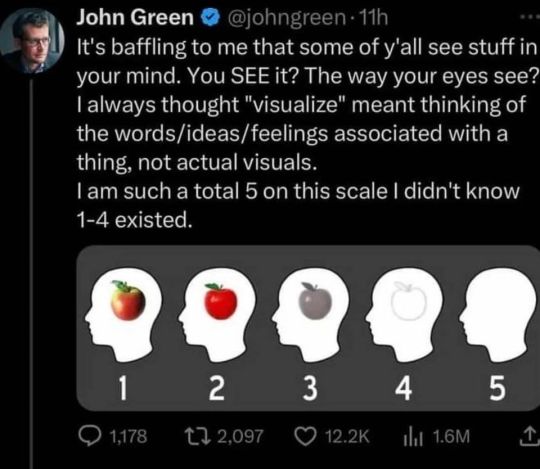
-
(and of course, feel free to elaborate in tags, etc.! (especially elaborating about other senses as well.. can you "hear" in your mind just as well as you can "see"? taste? etc.) It's an interesting topic to me, as someone who's like a 4.5 at MOST lol. I'm curious what option will be the most common :0c )
#repeat reblog#Hrmm.... this must be why you all like reading books so much lol… option 5.. so few of us…#Also I wonder if this is why I'm a more detail oriented writer. Like if I was making a story I would first have to plot out information#about the location. draw a map of the room the chararcters are in. sketch the characters. their outfits. do a lot of plotting and planning#about how the world and the setting works and what plants might be there and so on and so forth. Because I'm working#more from a factual knowledge base of like 'bullet point list of things I know about this setting/object/person/etc'#rather than actually just being able to see it in my mind. So to really conceptualize a person/place/thing - I have to build it#from the ground up conceptually. Gathering and organizing all the information about it until I have a Full Mental Concept of it - and THEN#I can work with it from there. But maybe someone who just Pictures all that in their brain from the beginning can kind of skip that step.#Like for example I literally have NO idea what any of my characters look like until I draw them. I have to actively decide what they look#like and think about all of those details and create the List Of Factual Information (black hair. green eyes. this tall. etc.) from scratch#. where the friend I talked to on the phone recently said that they literally just like... picture the character. like they just SEE them#doing stuff and know from there. And of course i have an IDEA of what I may want a characters appearnce to be or properties that would suit#them based on their Concept and Personality. but I literally do not know. And even when writing or thinking about characters doing things#I cannot visualize them no matter how hard I try. It's all theoretical factual recall for me. Also my friend said that to THEM the saying#''the characters write themselves'' was interpreted to mean.. they can literally sit down & watch the characters do things and it's as#if they are just creating a story in their mind from thin air. it writes itself. Where for ME I have always interpreted it to mean ''I have#undertaken the process of analyzing and plotting every detail of this character SO deeply that I know them SO well down to even#how they would walk or hold a pencil. and thus because I have such an intimate understanding of every intricacy of their personality. It's#extremely easy to just Put Them Into A Situation and assume exactly how they'd react/ exactly what they'd say because based#on what has factually been determined about them and their personality/worldview/etc. it's just.. literally automatic. The same way that#if you knew a friend's preferences extremely well you could probably easily predict how they'd respond to a birthday gift'' etc.#hmm.. ANYWAY... Which my friend may be an extreme example. I feel like it'd be obvious even for writers without aphantasia to STILL sit#down and plot out details & intimately understand their characters/setting/etc. But the idea that for ANYONE it's like ''yeah I dont have t#think much about designing the layout of a room/place/etc. I just kind of SEE it in my mind and know automatically''.... wild... lol#It makes it seem like I'm always having to do like 500 tons of extra work that other people can just skip .. oughh#''well after writing them for a YEAR and fully conceptualizing their personality and going through 15 sketch drafts. i have FINALLY#decided on an appearance for my character'' ... ''erm.. i have been seeing my character since day 1.. what do you mean?'' ... lol#ANYWAY.. and thank you to those who have sent in asks abt your experiences.. very inchresting.. sorry not posting/responding yet since im#still a bit sick feeling and energy is very scattered/low social ability/etc... even this post i typed over the course of days lol..
548 notes
·
View notes
Text
it’s Cold and my code isn’t Running and intellij can Kiss My Ass
0 notes
Text
TSAU!Donnie's Ninpō Explained!

The first ability Donnie unlocks is the ability to see mystic energy! Objects or people with with mystic energy has this colourful glowing aura you could call it, the more mystic energy the more brightly is glows. For example - Mikey already has a very bright aura naturally, which becomes even brighter when he is actively using magic! ..... All of this is to say, Donnie found that out the hard way when he used his mystic sight on Mikey when he was using magic and Donnie as a result got a little bit fucking blinded!
All yōkai and mutants are naturally mystic in nature, they always have a visable aura because of that. Humans are not mystic, so they don't have that aura. HOWEVER! Humans can learn how to use magic through certain means like, y'know, Ninpō for example! When a human uses magic, they do have mystic aura, but only while actively using mystic powers.
(Also Donnie totally accidentally discovered that the "teapot" had bad vibes because his mystic sight lol)

After a while Donnie is able to start making constructs out of his Ninpō. Initially however, he can't really form complex designs, it's mostly just blocks and walls, very simplistic shapes. But it turns out he can use these simpler constructs as effective shields! Which is good considering his soft shell as well as the fact that his battle shell in the AU wasn't built to be used as armour. Both he and April gets a lot of use out of the extra defense.


With quite a bit of practice Donnie is able to actually generate specific and more complex designs! Which means that yes, to the horror of friend and foe alike, Donnie can and will summon an entire arsenal of firepower, yikes. He's not limited to firearms though, he's able to generate all kinds of technology and machinery (drill!!!!)
To create these mystic contructs, it does require Donnie to have a good understanding of what it looks like, how it functions, etc. His imagination and his knowledge of technology are what sets a lot of the limits on what he is able to create, if he can build it in his lab then he can build it with his Ninpō. This particular ability requires a lot complex thought, if Donnie wasn't so smart he wouldn't be able to pull it off as well as he does.
Another limitation is that maintaining the contsructs is very energy-consuming, he'll quickly exhaust himself if he keeps them around. He'll usually only summon constructs very briefly for an attack and then immedietly dismiss them.

The way that Donnnie's Ninpō manifests itself is already very technology-oriented, because of that he can interact with ordinary technology through his Ninpō. Personally I haven't figured out the details of what exactly that can look like, but there's definitely a lot of possibilities to explore here.
One thing though, as Donnie's Ninpō grows more and more powerful overtime, a side-effect of that is that if he gets really pissed off or otherwise very emotional, he'll accidentally make the technology in his near viscinity go haywire lmao. (This has the risk of making him even more angry, which just worsens the problem, and so on haha)
I really like the idea of Donnie being the second most powerful mystic user out of his brothers, after Mikey of course. And because he's mostly self-trained, he doesn't have the best understanding of how to properly control his powers, which evidently can become a bit of a problem. Donnie eventually agrees to let Draxum help him get a better grasp on his mystic abilities after the Hamatos and the Draxums become more friendly with each other.

So uh. About how Donnie kinda accidentally infused Shelldon with mystic energy while creating him which caused the robot to develop a kind of soul? Yeah so because of that Shelldon's mystic energy if linked to Donnie's, which means that Shelldon more or less gains access to the same abilities as Donnie does! He's not quite as powerful as Donnie, and he still needs to practice to fully get a grasp on these powers as well. But point is, that's how Shelldon gains acess to Ninpō in the AU! (He also notices their fucked up "teapot")
----------
Anyway that basically summarizes it! A lot of these ideas are headcanons I have for canon!Donnie as well honestly, the AU is just an excuse to explore these concepts. Donnie's ability to summon fucking firearms and military equipment is also something I've thought about, I wanted to try to think how it would work for him while also putting some limitations on it. ANOTHER THING I like the idea of Donnie's tech constructs basically being the same ability as when Raph creates constructs of himself. The difference lies with that Donnie is a massive nerd so his first instinct is to recreate his own tech with the Ninpō. While Raph being someone who is already so physically strong would naturally use his Ninpō to recreate his own greatest weapon, which is himself. (Donnie uses his brain, Raph uses his brawn, who would've guessed)
#i love figuring out magic systems even though im not that good at it#at least not from scratch#its a lot easier to have something to go off of which i have here#tiz sep au#tizel art#my art#digital art#teenage mutant ninja turtles#rise of the teenage mutant ninja turtles#tmnt#rottmnt#rottmnt au#rottmnt donnie#rise donnie#rottmnt shelldon#rise shelldon
3K notes
·
View notes
Text
DevOps with Artificial Intelligence, Automation, and Blockchain: Part 1
This is part 1 of our introductory series, showcasing our experience, as we dive deeper into: 1) Software Engineering. 2) Data Science. 3) Artificial Intelligence, Machine Learning. 4) Business Development.

View On WordPress
#algorythms#application#Data#databases#datastructure#deepdive#design#designpatterns#dev#development#devOps#experience#mobile#object#objectorientedprogramming#operations#oriented#patterns#programming#showcasing#storage#structure#videoseries#web
0 notes
Text
semi-sorta off topic... but the whole state of programmer but not programmer resonates well with me.
My situation is that I'm getting into development from an automation background. Automation is basically just using what already exists with minimal logic.
I get developer tasks because I'm aiming to be in that position, but what I'm getting at is that I was talking to one of the devs on my team and telling them like, hoping to be a dev position before end of year. And they're like, you're already there. Maybe not the title officially, but you have added code, it is in production, you are a dev.
I'm like, well I did the easy stuff. I'm just kinda relying on everybody to make sure I didn't do something stupid or inefficient.
They're like, hey, wanna know a secret? We all are.
So, before you go "i'm not really a programmer," don't sell yourself short.
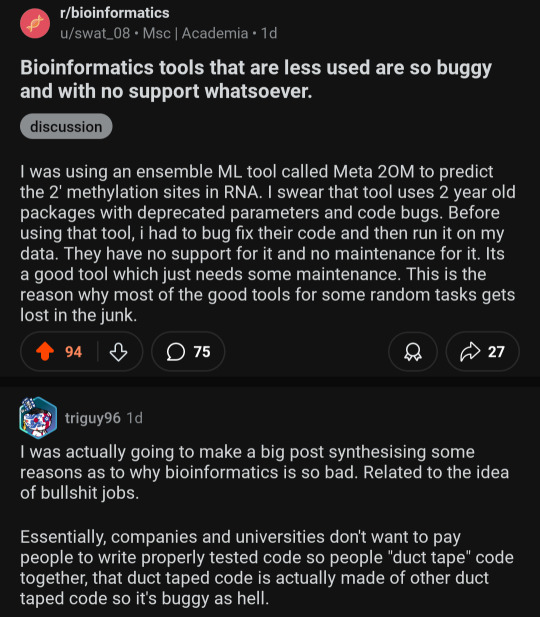
Found this on Reddit and need to share my pain
This is why I'm at a weird state of programmer but not programmer. I need to know code to understand and adjust and fix so many of the tools I use, but fundamentally I'm not doing anything algorithmically different than what's done before.
#maybe you don't know all the design patterns#or even the gang of four#or even the four pillars of object oriented programming#but you're changing code and to some degree understand what you're doing to make it work#anyway#sorry for totally going on a tangent#programming can be real discouraging sometimes
128 notes
·
View notes
Text
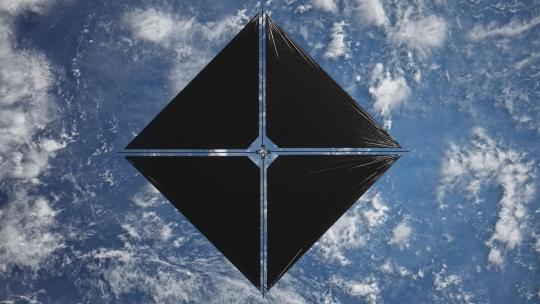
Setting Sail to Travel Through Space: 5 Things to Know about our New Mission
Our Advanced Composite Solar Sail System will launch aboard Rocket Lab’s Electron rocket from the company’s Launch Complex 1 in Māhia, New Zealand no earlier than April 23, at 6 p.m. EDT. This mission will demonstrate the use of innovative materials and structures to deploy a next-generation solar sail from a CubeSat in low Earth orbit.
Here are five things to know about this upcoming mission:
1. Sailing on Sunshine
Solar sails use the pressure of sunlight for propulsion much like sailboats harness the wind, eliminating the need for rocket fuel after the spacecraft has launched. If all goes according to plan, this technology demonstration will help us test how the solar sail shape and design work in different orbits.
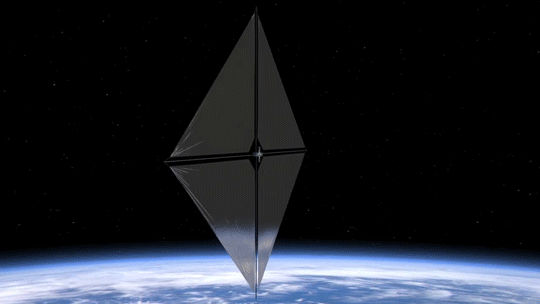
2. Small Package, Big Impact
The Advanced Composite Solar Sail System spacecraft is a CubeSat the size of a microwave, but when the package inside is fully unfurled, it will measure about 860 square feet (80 square meters) which is about the size of six parking spots. Once fully deployed, it will be the biggest, functional solar sail system – capable of controlled propulsion maneuvers – to be tested in space.

3. Second NASA Solar Sail in Space
If successful, the Advanced Composite Solar Sail System will be the second NASA solar sail to deploy in space, and not only will it be much larger, but this system will also test navigation capabilities to change the spacecraft’s orbit. This will help us gather data for future missions with even larger sails.
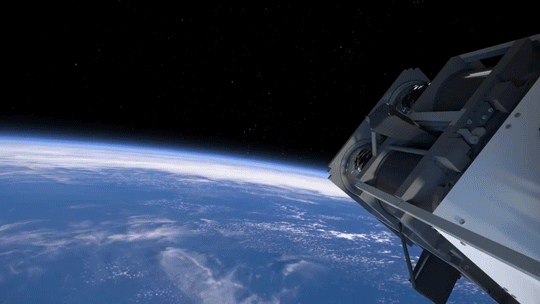
4. BOOM: Stronger, Lighter Booms
Just like a sailboat mast supports its cloth sails, a solar sail has support beams called booms that provide structure. The Advanced Composite Solar Sail System mission’s primary objective is to deploy a new type of boom. These booms are made from flexible polymer and carbon fiber materials that are stiffer and 75% lighter than previous boom designs. They can also be flattened and rolled like a tape measure. Two booms spanning the diagonal of the square (23 feet or about 7 meters in length) could be rolled up and fit into the palm of your hand!

5. It’s a bird...it’s a plane...it’s our solar sail!
About one to two months after launch, the Advanced Composite Solar Sail System spacecraft will deploy its booms and unfurl its solar sail. Because of its large size and reflective material, the spacecraft may be visible from Earth with the naked eye if the lighting conditions and orientation are just right!
To learn more about this mission that will inform future space travel and expand our understanding of our Sun and solar system, visit https://www.nasa.gov/mission/acs3/.
Make sure to follow us on Tumblr for your regular dose of space!
2K notes
·
View notes
Text
Writing Notes: Emotions

Definitions in Psychology (Anger; Anticipation; Anxiety; Contempt; Desire; Disgust; Distress; Fear; Guilt; Happiness; Interest; Joy; Pain; Pleasure; Rage; Sadness; Shame; Sorrow; Surprise; Terror; Wonder)
Anger
An emotion characterized by tension and hostility arising from frustration, real or imagined injury by another, or perceived injustice.
Can manifest itself in behaviors designed to remove the object of the anger (e.g., determined action) or behaviors designed merely to express the emotion (e.g., swearing).
Distinct from, but a significant activator of, aggression, which is behavior intended to harm someone or something. Despite their mutually influential relationship, anger is neither necessary nor sufficient for aggression to occur.
Anticipation
Looking forward to a future event or state.
Sometimes with an affective component (e.g., pleasure, anxiety).
Anxiety
An emotion characterized by apprehension and somatic symptoms of tension in which an individual anticipates impending danger, catastrophe, or misfortune.
The body often mobilizes itself to meet the perceived threat:
Muscles become tense, breathing is faster, and the heart beats more rapidly.
May be distinguished from fear both conceptually and physiologically, although the two terms are often used interchangeably.
Considered a future-oriented, long-acting response broadly focused on a diffuse threat, whereas fear is an appropriate, present-oriented, and short-lived response to a clearly identifiable and specific threat.
Contempt
An emotion characterized by negative regard for anything or anybody considered to be inferior, vile, or worthless.
Desire
A strong feeling of wanting or needing something.
Can be a motivating force that drives behavior and influences decision-making.
Can be related to a wide range of things, such as material possessions, experiences, relationships, or personal goals.
Often considered to be an emotion, and it can be accompanied by physical sensations such as an increased heart rate or butterflies in the stomach.
However, it can also be more cognitive in nature, driven by thoughts and beliefs rather than just emotional reactions.
Disgust
A strong aversion.
For example, to the taste, smell, or touch of something deemed revolting, or toward a person or behavior deemed morally repugnant.
Distress
A negative emotional state in which the specific quality of the emotion is unspecified or unidentifiable.
For example, stranger anxiety in infants is more properly designated stranger distress because the infant’s negative behavior, typically crying, allows no more specific identification of the emotion.
Fear
A basic, intense emotion aroused by the detection of imminent threat, involving an immediate alarm reaction that mobilizes the organism by triggering a set of physiological changes.
These include rapid heartbeat, redirection of blood flow away from the periphery toward the gut, tensing of the muscles, and a general mobilization of the organism to take action.
Fear differs from anxiety in that the former is considered an appropriate short-term response to a present, clearly identifiable threat, whereas the latter is a future-oriented, long-term response focused on a diffuse threat.
Some theorists characterize this distinction more particularly, proposing that fear is experienced when avoiding or escaping an aversive stimuli and that anxiety is experienced when entering a potentially dangerous situation (e.g., an animal foraging in a field where there might be a predator).
Whatever their precise differences in meaning, however, the terms are often used interchangeably in common parlance.
Guilt
A self-conscious emotion characterized by a painful appraisal of having done (or thought) something that is wrong and often by a readiness to take action designed to undo or mitigate this wrong.
It is distinct from shame, in which there is the additional strong fear of one’s deeds being publicly exposed to judgment or ridicule.
Happiness
An emotion of joy, gladness, satisfaction, and well-being.
Interest
An attitude characterized by a need or desire to give selective attention to something that is significant to the individual:
Such as an activity, goal, or research area.
Joy
A feeling of extreme gladness, delight, or exultation of the spirit arising from a sense of well-being or satisfaction.
The feeling of joy may take two forms: passive and active.
Passive joy involves tranquility and contentment with things as they are.
Active joy involves a desire to share one’s feelings with others. It is associated with more engagement of the environment than is passive joy.
The distinction between passive and active joy may be related to the intensity of the emotion, with active joy representing the more intense form.
Both forms of joy are associated with an increase in energy and feelings of confidence and self-esteem.
Pain
An unpleasant sensation resulting from damage to nerve tissue, stimulation of free nerve endings, or excessive stimulation (e.g., extremely loud sounds).
Physical pain is elicited by stimulation of pain receptors, which occur in groups of myelinated or unmyelinated fibers throughout the body but particularly in surface tissues.
Pain that is initiated in surface receptors generally is perceived as sharp, sudden, and localized; pain experienced in internal organs tends to be dull, longer lasting, and less localized.
Although pain is generally considered a physical phenomenon, it involves various cognitive, affective, and behavioral factors: It is an unpleasant emotional as well as sensory experience. It may also be a feeling of severe distress and suffering resulting from acute anxiety, loss of a loved one, or other psychological factors (see psychic pain).
Because of these various factors, as well as previous experience in pain response, individual reactions vary widely.
Psychologists have made important contributions to understanding pain by demonstrating the psychosocial and behavioral factors in the etiology, severity, exacerbation, maintenance, and treatment of both physical and psychic pain.
Pleasure
The emotion or sensation induced by the enjoyment or anticipation of what is felt or viewed as good or desirable.
Rage
Intense, typically uncontrolled anger.
Usually differentiated from hostility in that it is not necessarily accompanied by destructive actions but rather by excessive expressions.
In nonhuman animals, rage appears to be a late stage of aggression when normal deterrents to physical attack, such as submissive signals, are no longer effective.
Generally includes rapid respiration; thrusting and jerking of limbs; and clawing, biting, and snarling.
Sadness
An emotional state of unhappiness.
Ranges in intensity from mild to extreme.
Usually aroused by the loss of something that is highly valued (e.g., by the rupture of a relationship).
Shame
A highly unpleasant self-conscious emotion.
Arising from the sense of there being something dishonorable, immodest, or indecorous in one’s own conduct or circumstances.
Typically characterized by withdrawal from social intercourse:
For example, by hiding or distracting the attention of another from one’s shameful action—which can have a profound effect on psychological adjustment and interpersonal relationships.
May motivate not only avoidant behavior but also defensive, retaliative anger.
Psychological research consistently reports a relationship between proneness to shame and a host of psychological symptoms, including depression, anxiety, eating disorders, subclinical sociopathy, and low self-esteem.
Theorized to play a more positive adaptive function by regulating experiences of excessive and inappropriate interest and excitement and by diffusing potentially threatening social behavior.
Sorrow
A more "intense" emotion than sadness.
Can be caused by a past event (somebody's death, some other great loss).
Implies a long term state, possibly resulting from a past event, or from a past discovery of a long-term condition (e.g. childlessness or an incurable disease of one's child or spouse).
May have its roots in the past, but the stress is an ongoing, long-term state.
Surprise
An emotion typically resulting from the violation of an expectation or the detection of novelty in the environment.
Considered by some theorists to be one of the emotions that have a universal pattern of facial expression.
The physiological response includes raising or arching the eyebrows, opening the eyes wide, opening the mouth wide in an oval shape, and gasping.
Terror
Intense and overwhelming fear.
Wonder
An emotional state that arises when individuals encounter something surprising, unexpected, or profoundly beautiful.
This experience can lead to a heightened state of awareness and a desire to understand or explore the phenomena further.
Wonder is considered a positive emotion that can enhance cognitive functioning, creativity, and overall well-being.
Components of Wonder
Awe: A feeling of reverence and amazement, often in response to something grand or sublime.
Curiosity: A strong desire to learn or know more about the object of wonder.
Admiration: A sense of appreciation for the beauty, complexity, or uniqueness of the experience.
Surprise: An unexpected element that challenges preexisting knowledge or assumptions.
Transcendence: A feeling of being connected to something larger than oneself, often evoking a sense of humility and perspective.
Sources: 1 2 3 ⚜ More: Writing Notes & References ⚜ On Emotions
#emotions#writing reference#writeblr#spilled ink#psychology#writing prompt#poets on tumblr#character development#poetry#writers on tumblr#literature#words#linguistics#studyblr#langblr#dark academia#light academia#lit#fiction#saverio della gatta#novel#guillaume seignac#character building#writing resources
174 notes
·
View notes
Text

✨Kamino’s citadel challenge !✨
I am…very excited about this one. I’ve had this vision for a long time, and I’m so happy it’s ended up looking like that.
Now, there are a lot of things I’ll go into details along close ups under the cut; the only thing I’ll mention above is that I’m very grateful for TCW’s episode guides’ artworks, without which this would have been quite a hassle.

Okay ! Before diving into all the details and things, here is a view from above, to really display how big it is. Dimension-wise, the plank I built it on is around 110*70cm.

Now of course, the first detail which is noticeable is the floor, because, well, it’s everywhere.
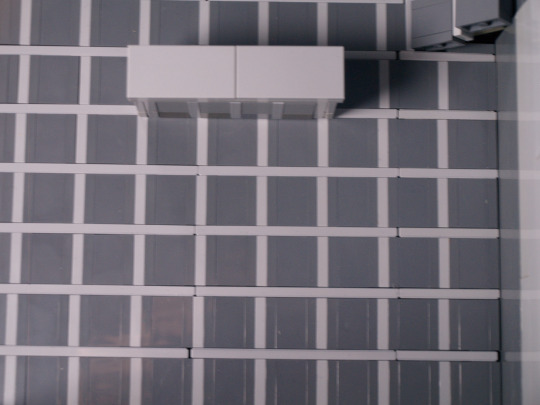
This was probably the most challenging part of the build, because making a grid out of Lego is tough. Most of it is rows and rows of dark square, light lines, separated by 1*n tiles. It was the easiest way to get this pattern with as if it were just tiles; because this is one of the objectives I had here : most of this MOC is smooth, except for a few zones (usually voluntarily).
The fact I used this technic means that the floor in most place isn’t very stable, but it actually holds up pretty well because of some hidden connection points with the foundations underneath, which are mostly hidden under the cover blocks.

Here for instance, I’m using modified 1*2 bricks with a Technic hole : it hold the cover block, and it also attaches the floor to the foundation.
Of course, another problem I ran into were slopes. Much harder to get a smooth effect with the technic I’ve used, so it’s a bit wonky and unstable. Also, most them are not aligned properly, which is visible in the picture above (and some area have some really big misalignments because of a few problems I probably won’t bore anyone reading this with).
Now, since they’re also here, I can deal with the cover blocks. These were, among the details, the hardest to figure out, to get a good size while keeping some texture. Eventually I came up with this design, which, ironically enough, uses the same technic the floor uses, in a different orientation.
Another detail : the miradors :
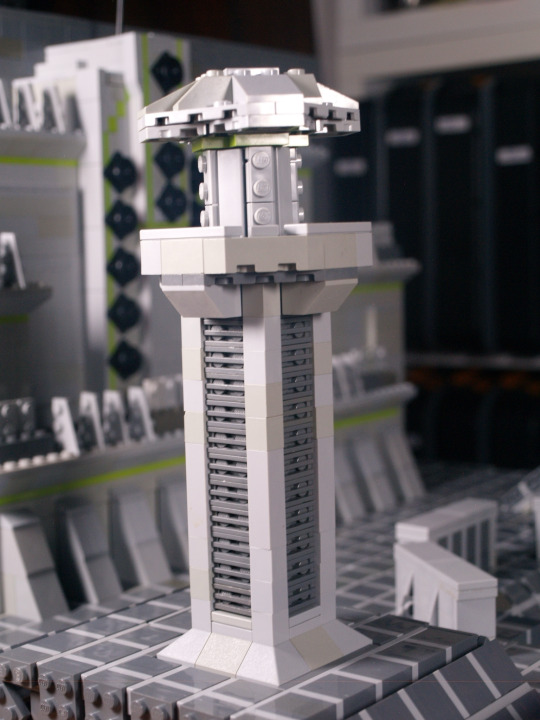
This is one of the first elements I had in place, because I needed them to get a good sense of scale (and was made better by an existing concept art of a tower alone). Most of it does not have anything noteworthy, except for one illegal technic I used (can you spot it ?)
The pillar holding the roof of the mirador is using a technic I had in my toolbox for a long time, but had never had the occasion to use : if you take two 'brick' bricks and attach them perpendicularly on a snot brick, the small space separating the lines of 'bricks' align to let a 1*n tile in. It’s somewhat reliable (for an illegal technic) and an easy way to get octogonal shapes.
Now, before looking at the Citadel itself, let’s turn around for a minute.

This point of view obviously isn’t the intended one, but it’s still worth noting, if only for some composition.
Notice that the wall here is quite small (smaller than the miradors, even), and light gray; it’s in contrast with the towering dark gray wall on the other side, behind the citadel, which technically should give at least some impressions even to the people who never saw TCW.
Anyway, it’s also on this view that we can see most of my slope struggles, including the central one, which is the biggest I had to do.
And I can’t not mention the most important element :
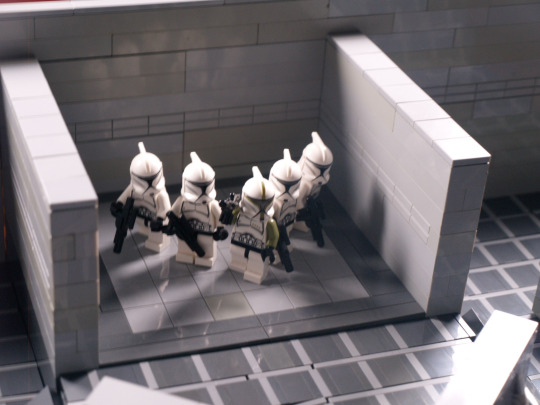
What would be the challenge without a squad of clones to take it on ? These clones (4 privates and a sergent) are ready to fight ! Well. Kinda. I wish I could have actual cadets, but they are not part of the Lego universe (and the floor was enough of a fee, I can’t afford to get customs figures too). I wish I had the Dominos though. I have TBB Echo, and I plan to get my hands on Fives at some point, but they wouldn’t fit here, sadly, so instead I used some movie accurate clones (because all the others are used for a project I still haven’t posted..maybe later…)
Notably, I at some point tried to get the elevator to work - needless to say it was a disaster (it’s too close to the plate underneath to make something working).
Now, without further ado. The citadel.
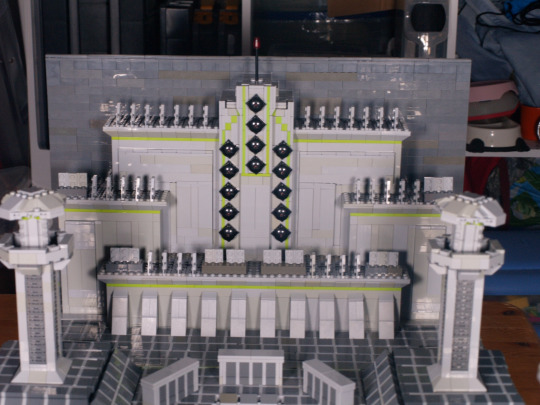
I’m very proud of it. I got the proportions just right (I actually made some measurements to make sure of it), and there is just enough texture to not make it bland while leaving it as artificial. This alone took roughly 8-10h (which were all spent during an accidental all nighter, whoops), but it was worth it. It’s completely empty inside, and, in fact, the wall behind it isn’t full as well, anything behind the citadel is opened. The spikes are simple 1*3 angle plates illegally connected, and the walls’ small details were made with a bunch of modified 1*2 plates, there isn’t anything really special in it.
The only really complicated zone was the middle tower, because I had to put all the cannons while keeping it clean and smooth, and including the vertical lime lines. It was a fun challenge. And I included the 'flag' At the top, too, just a red transparent cone on a stick (there’s no need for more), which peeks above the gray wall (for composition and because of a lack of pieces).
Anyway, such a long project deserves one behind the scene photo :

Yes, my desk is messy (and include my mandatory tea cup).
On the left, you can see my remaining floor tiles, which have not been used yet; and just under the citadel, you might notice the foundations visible; it’s a checker of 2*2 tiles which gives my floor a good base to be fixed on. There are also some slopes which haven’t been placed yet (in front of the background miradors), and at this steps, there were no cover blocks or walls yet.
As far as my tools go, you might notice brick separators scattered all around my work environment (I never have enough of those), as well as a tablet in the bottom right hand corner (which i use to check and measure concept arts), and in the middle, the red triangle is an official (albeit old) Lego measurement tool which counts in stud, Lego bar holes and axe length.
Also visible, finally, is the bottom of the foundations, which are stacks of 1*2 bricks (each of the three floor layer is separated by a height of 3 bricks), which means that looking directly under it can lead to watching the dark basement of my build (which isn’t aesthetic…).
Anyway, if you read until here, thanks, I guess ? I still have a few TCW related stuff (a small one next week, some other in the foreseeable feature), so feel free to stick around and maybe leave a note, if you feel like it ? That’s it, bye !
214 notes
·
View notes
Text
Vedic Astrology Nakshatras
Pt.1

Characteristics Associated with
Aries 0° to Taurus 10°
Ashwini/ Bharani /Krittika
Nakshatras
CHECK big 3 Sun Moon or Rising (Sidereal/Vedic chart) for traits
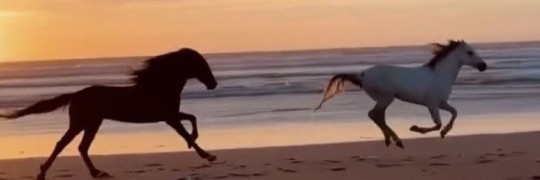
Ashwini : Swift Mover, Horseman, or Horse Harnessers
Symbol: Horse’s head
Presiding Deity: Ashwinis (Health)
Location: Aries 0º to Aries 13º20’
Dasa-Ruling Planet: Ketu (7 years)
Color: blood red
Animal: Male horse
Favorable: Good, steady worker; honorable living; competent, does a bove-average work; intelligent, reliable, self-sufficient; good finances;light-hearted, gives upliftment and healing energy to others; spiritual tendencies; modest, moderate habits (such as eating); likes to dress well
Unfavorable: Interest in newness may cause a weakness in finishing things; naive; wants to do things their own way too much; stubborn; zealot;wild and racing about like a horse
Recommended Activities: Conveys the energy of a horse. Good for doing things that require you to “move fast” or when you need to get results quickly; good for putting in your individual effort and cleverness, taking medicine, improving health, getting more wealth, conquering enemies,starting new learning, starting the study of Vastu or building designs, setting up new religious objects, engaging in activities related to transportation such as buying or selling a vehicle, traveling, getting new jewelry.

Bharani : The Bearer
Symbol: A female sex organ
Presiding Deity: Yama (Death or the setting sun)
Location: Aries 13º20’ to Aries 26º40’
Dasa-Ruling Planet: Venus (20 years)
Color: blood red
Animal: Male elephant
Favorable: Quick-minded; desires new experiences (especially with loveaffairs); prefers spontaneous behavior; gets things done quickly; dutiful;sticks by their family and friends; courageous attitude; good longevity
Unfavorable: Feels burdened; too much activity; fickle, amoral, too clever or calculating; doesn’t pace themselves; resists control;unmanageable, stubborn, childlike, vulnerable; their vigor often bothers more conservative people
Recommended Activities: Conveys the energy of cutting. Good for severe activities; “bearing the burden” of those unpleasant but necessary responsibilities; doing things that have a destructive, cruel, severe, orwarlike aspect to them; driving out “evil” influences; starting a lawsuit,initiating an attack, filing for divorce, entering a competition; starting a campaign against a competitor or rival; doing things that involve toxins,chemicals, fire, or any “poisonous�� things (e.g., starting chemotherapy,applying pesticides, etc.); good for burning things; agricultural activities start well here; doing related things such as drilling for water

Krittika Translation: The Cutter
Symbol: Axe, sharp edge, or flame
Presiding Deity: Agni (Fire)
Location: Aries 26º40’ to Taurus 10º
Dasa-Ruling Planet: Sun (6 years)
Color: White
Animal: Female goat
Favorable: Motivated; achieves and acquires many things; bright; strong appetites (such as food and sex); goal oriented; likes to get the bottom line;goes for what they want; survivor; dignified; takes pride in what they do;will honor their commitments; good leader; straightforward
Unfavorable: Changeable, vacillating, stubborn; not open to advice; hard to please; impatient; responds too strongly to challenges; sets goals or expectations too high; burns out their health by constant and unrelenting activity; often nervous or excitable
Recommended Activities: Conveys the energy of being militaristic. This placement is good for “cutting to the chase”; being audacious, brash, and cutting straight to the point; arguing for one’s point of view in a razor-sharpmanner; doing any type of cutting such as carpentry work; good for seizingthe initiative and being competitive; not asking for permission; taking an aggressive and combative approach; working with weapons and doing metal work; collecting money that is due. Carefully planned strategies will be well executed when the Moon occupies this nakshatra; one’s opponents will be weak to resist. It's not good for travel or for driving vehicles
𓋹Thx so much for reading so much effort put in its tiring lol, I'll be more appreciative of the other astrology posts and tarot that are done well𓋹
𓋹I will be posting pt.2 Taurus nakshatras soon𓋹
#astrology#vedic astro notes#free astrology#vedic astro observations#vedic astrology#vedic chart#krittika#ashwini#bharani#aries#taurus#mars#ketu#venus#sun astrology#venus astrology#mars astrology#zodiac observations#nakshatras#sidereal astrology#sidereal zodiac#sidereal chart#sidereal observations#vedicwisdom#nakshatra#taurus astrology#aries astrology#celestiacelentra38
107 notes
·
View notes
Text
NASA's Voyager 2 spacecraft is alone drifting through interstellar space after a communications breakdown left it unable to receive commands or transmit data back to Earth.
Communications with Voyager 2, which is currently around 12.4 billion miles (19.9 billion kilometers) from Earth, were severed as a result of planned commands. These commands rotated the spacecraft's antenna two degrees away from our planet, enough to cut its links to the ground antennas of NASA's Deep Space Network (DSN).
As a result, Voyager 2 is no longer sending data back to the DSN, and mission control on Earth can't send any commands back to the interstellar spacecraft.
Not all is lost, however. Voyager 2, launched in 1977, is programmed to reset its orientation several times a year to keep its antenna directed at Earth. Another reset is scheduled for Oct. 15 this year, and this should result in Voyager 2 resuming contact with its ground control. Until that time, operators expect the spacecraft to stick to its planned trajectory.
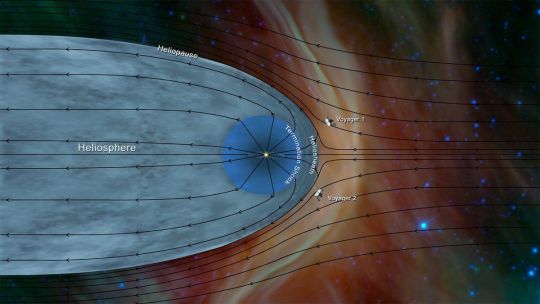
Voyager 2 was launched from Launch Complex 41 at Cape Canaveral, Florida, on August 20, 1977. It made history on Dec. 10, 2018, when it became the second spacecraft to leave the solar system and enter interstellar space.
Six years prior to this, its sister craft Voyager 1 became the first man-made craft to journey beyond the influence of our star, the sun. Voyager 1 is currently around 15 billion miles (24 billion km) from Earth and remains in contact with our planet.
Both Voyager 1 and 2 were designed to find and study objects at the edge of the solar system, according to NASA. In the course of doing this, Voyager 2 has been responsible for a number of scientific firsts. It is the only spacecraft that has conducted close-up studies of all four giant planets of the solar system — the gas giants Jupiter and Saturn and the ice giants Neptune and Uranus.
In Jan. 1986, Voyager 2 became the first human-made object to fly past Uranus. During that trip, Voyager 2 discovered 10 new moons and two new rings around the ice giant. In Aug. 1989, it also became the first spacecraft to buzz past Neptune, and while there, it discovered five moons and four rings. While studying Neptune, Voyager 2 also discovered an 8,100-mile by 4,100-mile (13,036 km by 6,600 km) cyclonic storm with winds of up to 1,300 miles per hour (2,092 km/h) raging on the ice giant, which has been dubbed the Great Dark Spot.
In April 2023, NASA announced that Voyager 2 would postpone a planned instrument shutdown by at least three years, continuing to gather valuable deep space data until at least 2026.
"We are definitely interested in keeping as many science instruments operating as long as possible," Voyager project scientist at NASA's Jet Propulsion Laboratory in southern California, Linda Spilker, said in a statement issued on Wednesday, April 26.
1K notes
·
View notes
Text
thinking about my sebastian headcanons this morning and something that I think about his personality is he is a really smart guy who is all about the details.
Like, him having a MILLION piercings while still human is one thing I feel like kinda fits in here, but his appearance while fish is also similarly quite accessorized. You really need to be dedicated to put on THAT many belts and bags (they're human body harnesses he stole, but still) As well as his overall fancy ass outfit. He cares quite a lot about looking nice.
We don't know how he got the outfit, but I assume he found the coat somewhere, modified a 3rd sleeve for it (you can see his hasty stitching..) and also made his jabot himself, mayybe found the undershirt as well.
In terms of how his detail-oriented nature affects his shop, I noticed that he likes posing his USB sticks
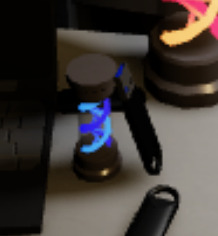
and then more generally, he chose to decorate his hideout with all these DNA containers (and various other objects)
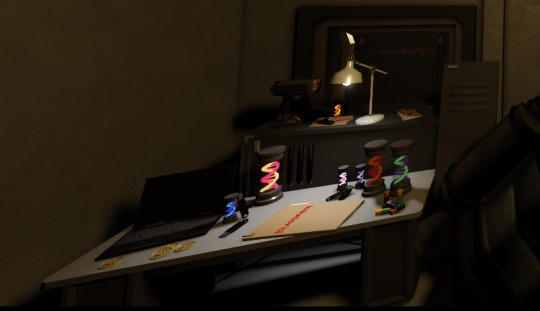
and obviously, this is all just good set design from Zeal to make the shop look nice, but I like looking into things way too hard to glean some info about Seb's personality. We don't know the true Sebastian, we know the personality he puts on to talk to the EXR-P's, which IS him, but obviously he's hiding quite a lot.
He has an in-depth knowledge of the creatures in the Blacksite, he probably keeps his folders of documents very organized. Of course, he HAS to be like this for the game to.. work! But still, fun to think about. He's pouring over all the data he gets in his free time from the EXR-P's to try and find some little shreds of information that are good enough blackmail to get him out of there...
He's alsooo an engineer(sort of).. famously a career that kind of requires you to be pretty meticulous. I think its easy to not notice how smart of a guy he is, but it's a pretty major part of who he is! his poor college education.. all down the drain because someone framed him for murder...
and then like finally, this is also just straight up needed for the game to work as a game but still tells us more about Sebastian. He intentionally chose a keycard room for his shop to be in. He moved the keycard into his shop so most EXR-P's would NEED to come look at his wares to progress
#sebastian solace#data.txt#our smart little fishy#this whole post may just be extremely obvious to some people but i think its details about his personality that#most ppl aren't truly gonna notice#and i have fun putting all my thoughts about him into words
119 notes
·
View notes
Note
*Slides into the ask box like you're a priest and I'm confessing*
Windblade is so hot I wanna go down on her
She probably has one of my favorite designs among the femme bots but I think I have a thing for seekers in general (mainly Starscream).
Also do you think having a preference for a bot's frame type would be fetishism or more like an orientation?
Windblade should frag me with her spike I'm desperate for it - i love powerful jet ladies
Now, I assume frame types (much like irl orientation) can become a fetish if you actively start dehumanizing the objects of your affection
To me Cybertronian genders have like 4 layers to them (pretty sure I made a post abt it in the past - that one's more TFP related tho). Cybertronian orientations are a nightmare to distinguish for this reason, but yeah - i can see flight frames, especially high speed ones, being coveted - especially in Vos. All Starscreams are considered bombshells by Vosnian standards
69 notes
·
View notes